Aswan City

Aswan City emerges from the sands of time as the legendary "Land of Gold," bearing witness to millennia of Egyptian civilization through its distinguished role as a royal Nubian cemetery. This magnificent urban center commands the picturesque banks of the Nile River in Upper Egypt, where the unhurried rhythms of antiquity still pulse through its streets. The city presides as capital of the Aswan Governorate, encompassing 375.39 km² of historically rich terrain while nurturing a population of 401,890 inhabitants as of 2023.
Ancient pharaohs recognized Aswan's exceptional value as a commercial nexus, establishing it as the paramount gateway linking Egypt to distant African kingdoms. The city's commanding position along the east bank of the Nile, positioned strategically north of the first cataract, created an organic frontier that ancient Egyptians relied upon as their southern compass point. Today's visitors discover five extraordinary monuments nestled within the UNESCO World Heritage designation of Nubian Monuments from Abu Simbel to Philae, each structure representing architectural mastery that continues to astound scholars and enthusiasts alike.
The city's cultural legacy extends far beyond monumental stone achievements, encompassing a vibrant tradition of indigenous crafts and folk arts that flourish to this day. Modern engineering prowess manifests through the Aswan High Dam—Earth's most colossal embankment dam structure. Whether travelers arrive via the efficiently positioned airport (requiring merely a 45-minute journey to reach the city center) or appreciate its pivotal contribution to Egypt's industrial advancement, Aswan stands as an indispensable destination for those determined to decode Egypt's multilayered cultural heritage.
Ancient Origins of Aswan City
Archaeological investigations reveal that the ancient Egyptian metropolis of Swenett underwent remarkable transformations across millennia before emerging as contemporary Aswan, establishing itself as a cornerstone of Egyptian civilization. The settlement's roots penetrate the deepest layers of Egyptian chronology, with excavated evidence substantiating its status as one of the oldest continuously inhabited settlements within the Egyptian territories.
The meaning behind the name Swenett
Etymological scholarship unveils the profound cultural resonance embedded within the name "Swenett." Distinguished Egyptologists trace the nomenclature to an ancient Egyptian deity presiding over childbirth. Subsequent civilizations preserved this divine association; Hellenic scholars recognized this goddess as Eileithyia, while Roman theologians designated her Lucina—both maintaining the maternal childbirth connection. The appellative meaning—"the opener"—possessed extraordinary symbolic weight, marking Swenett as the geographical threshold where Egypt commenced its territorial expanse.
Scholarly investigation has uncovered a compelling alternative etymology linking the name to Egyptian hieroglyphic symbols representing "trade" or "market". This fascinating dual linguistic heritage illuminates the city's extraordinary capacity to function simultaneously as a sacred ceremonial center and bustling commercial enterprise. UNESCO documentation records that ancient Egyptians designated Aswan as "Sono," literally signifying "the market", while contemporaneous historical chronicles celebrate it as the "Land of Gold," acknowledging its prestigious function as the necropolis for Nubian monarchs.
Aswan's role in ancient Egyptian trade
The settlement's strategically at the First Cataract positioning along the Nile River naturally established Swenett as an indispensable commercial epicenter. This precise location—where churning granite formations and turbulent rapids disrupted river navigation—created an organic territorial demarcation while establishing the settlement as the crucial portal connecting Egypt with southern African territories.
Across successive pharaonic dynasties, Swenett flourished as a commercial epicenter linking Egypt with Nubian kingdoms, sub-Saharan territories, and Red Sea trading networks. Merchant caravans exchanged precious commodities encompassing:
- Gold deposits and rare metallic elements
- Ivory tusks and ebony timber
- Exotic fauna and specialized animal products
- Aromatic spices and sacred incense
The settlement's renowned granite extraction sites furnished construction materials for Egypt's most celebrated architectural achievements, including the magnificent Great Pyramid of Giza. The colossal Unfinished Obelisk, permanently anchored within these ancient quarries, demonstrates the extraordinary mastery of stone-carving techniques achieved by Egyptian artisans.
Operating as a dynamic riverine port, Swenett administered taxation and customs collection from every vessel navigating the Nile's waters, generating substantial revenue that bolstered ancient Egypt's economic foundation. This financial function endured consistently throughout multiple dynastic periods, establishing the settlement's reputation as a fundamental economic powerhouse.
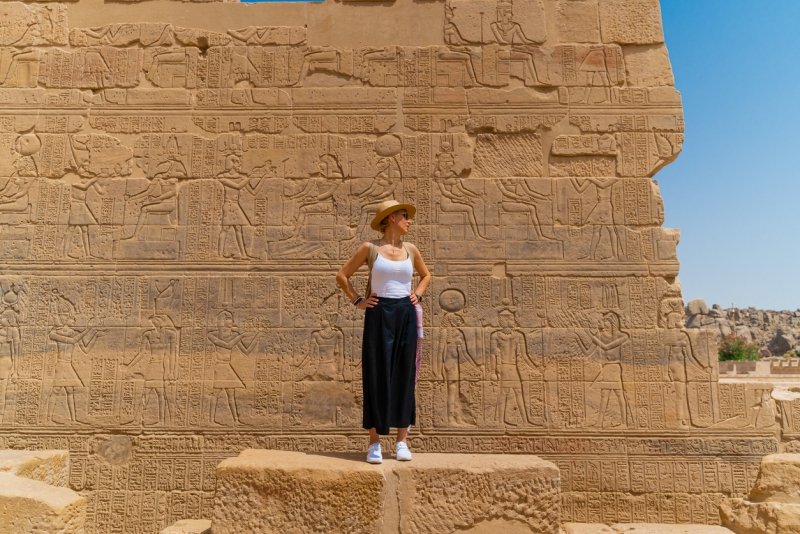
Religious and military significance
Commercial activities represented merely one facet of Swenett's multifaceted importance within ancient Egyptian cosmological understanding. The settlement encompassed numerous temple complexes and consecrated locations dedicated to diverse deities. Adjacent Elephantine Island hosted elaborate worship facilities honoring Khnum (the ram-headed divinity governing the Nile's source), Satet, and Anuket within purpose-built sanctuaries. The magnificent Temple of Philae, consecrated to goddess Isis, achieved prominence as a principal religious destination throughout later historical periods.
Military strategic considerations elevated Swenett's significance throughout Egyptian imperial history. The settlement's frontier location at Egypt's southern boundary created an ideal defensive bastion, providing protection against hostile incursions from Nubian territories and neighboring regions. Extensive fortification systems included imposing defensive barriers, surveillance towers, and permanent military installations designed to safeguard both territorial borders and vital commercial pathways.
Middle Kingdom pharaohs utilized Swenett as the operational headquarters for military campaigns extending into Nubian, Sudanese, and Ethiopian territories. This martial importance continued through successive historical epochs, with the settlement maintaining its garrison functions under Roman administration, Turkish rule, and ultimately British colonial oversight.
The settlement's enduring historical significance appears prominently within the scholarly works of ancient historians including Herodotus, Strabo, and Ptolemy, alongside biblical documentation, confirming its sustained importance across multiple civilizations.
Geography and Climate of Aswan
The southernmost sentinel of Egypt, Aswan City commands a position of geographic magnificence along the Nile's eastern shores. This ancient metropolis functions as both an irresistible destination for discerning travelers and a crucial commercial nucleus, strategically positioned north of the celebrated Aswan Dam.
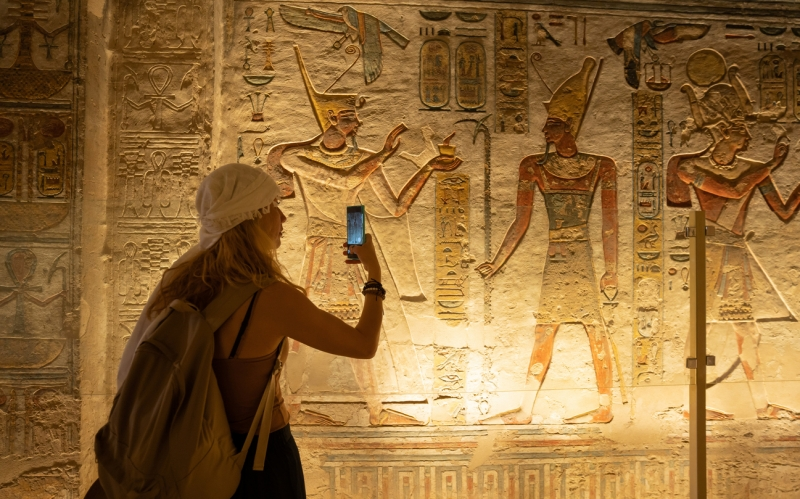
Customize Your Dream Vacation!
Get in touch with our local experts for an unforgettable journey.
Plan Your TripWhere is Aswan located?
Anchored precisely at 24° 5′ 23″ north latitude, Aswan maintains its vigil 926 kilometers south of Cairo. The metropolis serves as the administrative heart of Aswan Governorate, spanning 262 square miles (679 square km) of historically significant terrain. Geographic boundaries define the region with Qena Governorate stretching northward, Red Sea Governorate extending eastward, Western Desert oases spreading westward, and the Republic of Sudan marking the southern horizon.
Aswan's geographic distinction stems from its intimate relationship with the First Cataract of the Nile—where granite sentinels create turbulent rapids and scattered islands throughout the river's course. This natural fortification historically delineated the boundary separating Egypt from Nubian territories. The city rests 85 meters above sea level, surrounded by a dramatic landscape of sandstone, granite, and diorite formations sculpted by ancient watercourses now lost to time.
The Northern Tropic and Eratosthenes' experiment
Aswan's geographic coordinates have captivated scientific minds since antiquity. Though positioned slightly north of the actual Tropic of Cancer (23°26′13.3″ N), Aswan's coordinates at 24°05′20″ N appeared sufficiently precise to ancient observers who considered it positioned directly beneath the tropic.
This geographic peculiarity produced an extraordinary phenomenon: during summer solstice, vertical objects at midday cast virtually no shadows. At local noon on the summer solstice, the sun blazed directly overhead in ancient Syene (modern Aswan), illuminating deep wells completely to their bottoms without shadow interference.
Such remarkable conditions inspired one of history's most brilliant scientific achievements. Approximately 2200 years ago, the Greek scholar Eratosthenes exploited this observation to determine Earth's circumference. Through meticulous comparison of shadow lengths in Alexandria against Aswan's shadowless conditions during summer solstice, Eratosthenes calculated an angular difference of roughly 7°—precisely 1/50th of a complete circle. Multiplying the measured distance between these cities (5,000 stadia) by 50, he determined Earth's circumference as 250,000 stadia—achieving remarkable accuracy with errors ranging only from -2.4% to +0.8%.
Aswan's desert climate and sunshine
Aswan exhibits a hot desert climate (Köppen classification BWh) and ranks among Earth's most extreme urban environments regarding heat, sunshine, and aridity. The city demonstrates:
- Temperature extremes: Summer readings consistently surpass 40°C (104.0°F), with the recorded maximum reaching an extraordinary 51°C (124°F) on July 4, 1918.
- Precipitation scarcity: Annual rainfall averages a mere 10 millimeters, placing Aswan among our planet's most arid inhabited locations—years frequently pass without any rainfall whatsoever.
- Sunshine abundance: The city basks in approximately 3,865 hours of annual sunshine, delivering roughly 10.6 hours of brilliant illumination daily.
- Humidity depression: Average relative humidity hovers at merely 26%, creating year-round conditions of penetrating dry heat.
Temperature patterns maintain consistency throughout the year, with August claiming the distinction of warmest month (averaging 34.9°C) while January provides the mildest respite (averaging 16.5°C). These climatic conditions forge an environment where cloudless skies reign supreme virtually every day, establishing Aswan as a premier winter retreat celebrated for its relentless sunshine.
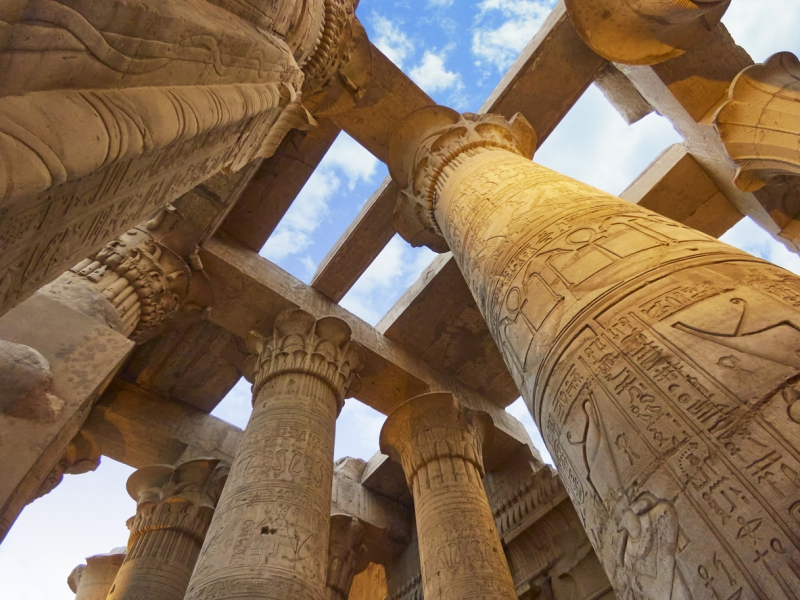
Top Historical Sites and Attractions
Aswan harbors Egypt's most extraordinary archaeological treasures, each monument representing millennia of human achievement and divine architectural mastery that draws scholars and adventurers from every continent.
Philae Temple and its relocation
Erected in 690 BCE, Philae Temple ranks among Egypt's most captivating sacred complexes, consecrated to the goddess Isis. This architectural marvel originally graced Philae Island until the Aswan dams threatened its very existence through relentless flooding. UNESCO orchestrated an unprecedented international salvation effort during the 1960s, meticulously disassembling the temple into over 40,000 individual blocks. Master craftsmen numbered each fragment before transporting them to neighboring Agilkia Island, where the temple was reconstructed with painstaking precision to maintain its sacred integrity. This extraordinary sanctuary once witnessed the genesis of the Osiris-Isis mythology that would captivate ancient civilizations.
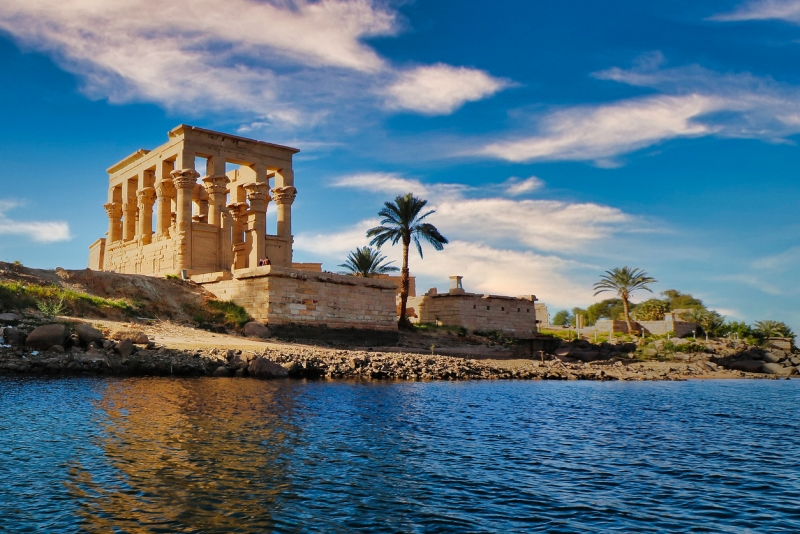
The Unfinished Obelisk and ancient quarries
Emerging from sand-buried obscurity during the early twentieth century, the Unfinished Obelisk reveals profound secrets of pharaonic stone mastery. Queen Hatshepsut (c. 1473–1458 BC) commissioned this colossal monument for Karnak's Temple of Amun, yet natural stone imperfections forced its abandonment. Had artisans completed their work, this towering achievement would have measured 1168 tons and reached 42 meters skyward—dwarfing every other ancient Egyptian obelisk. The quarry site demonstrates ancient Egyptian ingenuity, where copper implements and water-soaked wooden wedges split granite with mathematical precision.
Abu Simbel and its solar alignment
Ramses II's temple at Abu Simbel showcases ancient Egypt's astronomical sophistication through its biannual solar phenomenon. Twice each year—October 22nd and February 22nd—solar rays pierce the temple's inner sanctum, bathing three of four interior statues in golden light. These precise dates commemorate Ramses II's birth and coronation anniversaries respectively. The illuminated figures represent King Ramses II alongside deities Amun-Re and Re-Hor-Akhty, while Ptah, God of Darkness, remains shrouded in shadow to honor his underworld dominion. This 100-foot monument was hewn directly from sandstone cliffs overlooking the Nile's eternal waters.
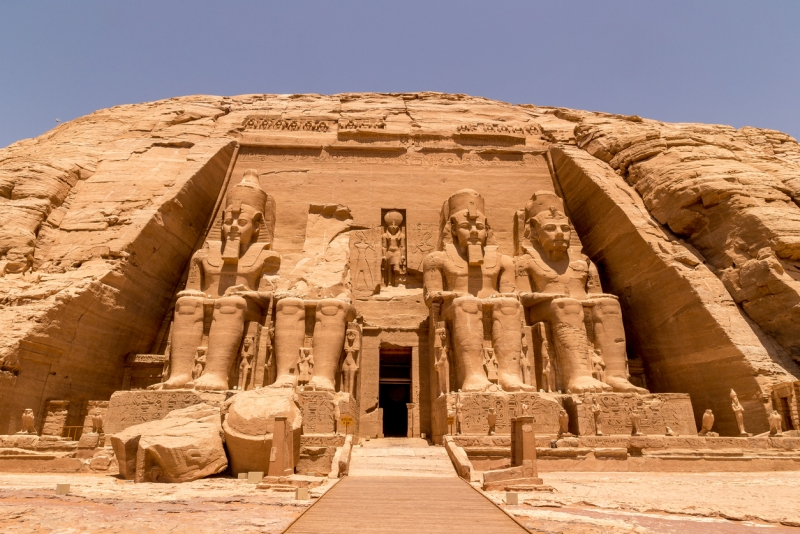
Kom Ombo and Edfu Temples
Kom Ombo Temple exhibits a distinctive dual architectural design honoring both Sobek (the crocodile deity) and Horus (the falcon god). Constructed during the Ptolemaic era (180-47 BC), this remarkable structure features intricate medical instrument engravings—among humanity's earliest such artistic representations. The nearby Edfu Temple stands as Egypt's most impeccably preserved cult temple, where mythological accounts describe falcon-headed Horus exacting vengeance upon Seth for murdering Osiris. Both sanctuaries offer Egypt tours displaying the sophisticated merger of Ptolemaic and Roman architectural traditions.
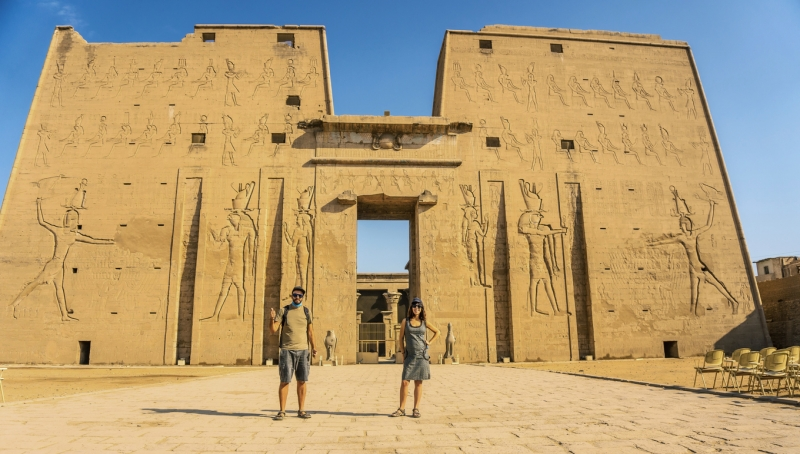
Nubian Museum and cultural preservation
Founded in 1997, the Nubian Museum stands as guardian of cultural treasures endangered by the Aswan Dam's construction. This UNESCO World Heritage institution safeguards countless artifacts from ancient Nubian kingdoms, including ceramic vessels, ornamental jewelry, sculptural masterpieces, and daily implements. The museum's exhibitions document the UNESCO-directed rescue operations that saved priceless monuments from rising waters. Housing a 10,000-volume library alongside displays of Nubian linguistics, scripts, and domestic artifacts, this institution exemplifies Egypt's dedication to preserving its multifaceted cultural inheritance.

Modern Aswan: Infrastructure and Development
Contemporary engineering achievements have elevated Aswan City into a pinnacle of modern infrastructure development, demonstrating Egypt's remarkable capacity for large-scale construction projects. The metamorphosis of this ancient settlement into a sophisticated urban center reflects decades of ambitious infrastructure initiatives and calculated demographic expansion.
Aswan High Dam and Lake Nasser
The Aswan High Dam represents one of humanity's most extraordinary engineering accomplishments, completed in 1970 with specifications that continue to astound construction experts worldwide. This colossal structure extends 3,830 meters in length, measures 980 meters across its foundation, and soars 111 meters into the Egyptian sky. The dam's construction required approximately 43,000,000 cubic meters of material while engineering systems capable of managing water flows reaching 11,000 cubic meters per second. Soviet technical expertise contributed to this massive undertaking, which serves the triple function of flood control, irrigation provision, and hydroelectric power generation.
The dam's construction birthed Lake Nasser, ranking among Earth's most impressive artificial water bodies. This vast reservoir encompasses 5,250 square kilometers and possesses storage capacity for 132 cubic kilometers of precious water. The lake's dimensions are staggering—stretching 550 kilometers in length while achieving maximum widths of 35 kilometers. This engineering marvel has fundamentally altered Egyptian agricultural practices, enabling continuous irrigation across approximately 840,000 hectares of cultivated land.
Aswan city population and urban growth
Contemporary Aswan supports a population of 378,578 residents as documented in 2025. The city's demographic evolution since 1950—when merely 33,241 inhabitants called Aswan home—demonstrates exceptional urban expansion. Recent growth patterns show 7,146 new residents within a single year, representing a robust 1.92% annual population increase. Metropolitan area statistics reveal similar expansion, with populations climbing from 358,000 in 2022 to 379,000 by 2025.
Aswan Governorate maintains demographic equilibrium between urban and rural constituencies. The broader governorate, housing 1,656,218 residents in 2023, allocates approximately 45.9% of its population within urban boundaries.
Transport: Aswan airport to Aswan city and beyond
Aswan International Airport occupies a strategic position 16 kilometers southwest of the urban center. This aviation facility, operational since 1992, facilitates both domestic connections to Cairo, Luxor, and Hurghada, alongside international flight services. Multiple transportation options serve arriving passengers:
- Airport taxi services (unmetered, requiring fare negotiation)
- Private transfer arrangements (door-to-door convenience)
- Vehicle rental facilities
Airport-to-city transit typically requires approximately 17 minutes. The facility provides efficient access to regional attractions including Philae Temple, Unfinished Obelisk, Nubian Villages, and the renowned Abu Simbel Temples.
Cultural Life and Local Traditions
Nubian cultural traditions flourish within Aswan's boundaries, representing one of Africa's most enduring indigenous civilizations that has successfully maintained its distinct identity across millennia of political upheaval.
Nubian heritage and crafts
Artisanal mastery defines Nubian cultural expression through sophisticated craftsmanship techniques refined over countless generations. Traditional Nubian crafts encompass intricate beadwork, elaborate tablecloth production, palm branch creations, clay products, and needle-work. Nubian villages present a remarkable architectural phenomenon—brightly colored mud homes crowned with domed ceilings frequently display mummified crocodiles suspended over doorways as talismanic protection against malevolent forces. Across Aswan's cultural landscape, Nubian women perpetuate ancestral artisanal knowledge, crafting memorable souvenirs that embody centuries-old techniques transmitted through matrilineal traditions.
Folk dances and music
Cultural anthropologists have documented more than 50 traditional folk dances that remain integral to Aswan's living heritage. The celebrated Aswan Folk Troupe—comprised of exceptionally talented dancers and musicians—performs throughout Egypt, serving as cultural ambassadors who preserve these ancient ceremonial traditions. Music represents the cornerstone of Nubian identity, with contemporary initiatives such as the Aswan Music Project working to revitalize traditional soundscapes that face extinction from modern cultural pressures.
Aswan Botanical Garden and Kitchener's Island
Lord Horatio Kitchener's botanical vision materialized when he transformed this 6.8-hectare island sanctuary into an extraordinary horticultural paradise following his acquisition in the 1890s. Contemporary visitors encounter exotic botanical specimens imported from the Far East, India, and Africa. The garden's distinctive design features 27 chess board-like squares intersected by geometric pathways, creating a tranquil refuge ideal for Egypt tours seeking natural splendor amidst historical grandeur.
Aswan Market (Souq) experience
The Old Aswan Market delivers an authentic cultural immersion that transcends conventional tourist experiences. This vibrant souk exhibits a distinctly African character through its collection of Nubian masks, colorful woven baskets, and carved wooden crocodiles. Historical documentation confirms Aswan's pivotal role as a primary trading nexus connecting African territories with the Nile Valley civilizations, a legacy that continues to influence the market's remarkably diverse commercial offerings.
Aswan City endures as an extraordinary chronicle of human achievement, where pharaonic grandeur converges with contemporary ingenuity across the centuries. This venerable settlement has sustained its pivotal role as a cultural conduit linking Egypt to the broader African continent, its destiny inexorably shaped by the mighty Nile's eternal flow. From its primordial function as a sacred Nubian burial ground to its emergence as an indispensable commercial artery, Aswan has consistently demonstrated remarkable adaptability while preserving its essential character.
Archaeological enthusiasts encounter an unparalleled assemblage of UNESCO-designated treasures within Aswan's boundaries. The painstakingly preserved Philae Temple, the colossal Unfinished Obelisk, and the astronomically calibrated Abu Simbel represent the pinnacle of ancient Egyptian architectural mastery. These enduring monuments narrate tales of spiritual devotion, technological sophistication, and celestial understanding that continue to provoke scholarly fascination among contemporary researchers.
Aswan's distinctive geographical positioning has contributed extraordinary scientific achievements to human knowledge. The city's proximity to the Tropic of Cancer facilitated Eratosthenes' groundbreaking calculation of Earth's circumference, while its desert climate bestows nearly perpetual sunshine, establishing it as a coveted winter sanctuary despite scorching summer temperatures that routinely surpass 40°C.
Contemporary Aswan exemplifies the profound impact of monumental infrastructure endeavors on societal development. The Aswan High Dam stands among humanity's most ambitious engineering accomplishments, generating Lake Nasser while simultaneously managing flood control, agricultural irrigation, and electrical power generation. This colossal project fundamentally altered Egypt's agricultural landscape and enhanced living standards across the nation.
The city's cultural essence thrives through its distinctive Nubian heritage. Master craftspeople perpetuate ancestral traditions while folk performances and musical expressions safeguard ancient cultural manifestations. Aswan presents discerning travelers with an exceptional opportunity to observe living traditions flourishing alongside monumental antiquities.
Despite its modest contemporary scale, Aswan maintains disproportionate influence within Egypt's cultural consciousness. From its ancient incarnation as Swenett through its current designation as a critical urban hub, the city embodies the persistent essence of Egyptian civilization. Travelers committed to comprehending Egypt's profound cultural depths will discover Aswan an indispensable destination where historical grandeur and modern vitality exist in remarkable harmony.
Key Takeaways
Discover the essential insights about Aswan City, where ancient Egyptian civilization meets modern engineering marvels along the legendary Nile River.
• Aswan served as ancient Egypt's gateway to Africa, functioning as a vital trading hub connecting Egypt with Nubia and sub-Saharan regions for thousands of years.
• The city houses five UNESCO World Heritage monuments, including the relocated Philae Temple and Abu Simbel with its remarkable biannual solar alignment phenomenon.
• Aswan's unique position near the Tropic of Cancer enabled Eratosthenes to calculate Earth's circumference with 98% accuracy over 2,000 years ago.
• The Aswan High Dam, completed in 1970, created Lake Nasser and transformed Egyptian agriculture by enabling year-round irrigation for 840,000 hectares of farmland.
• Vibrant Nubian culture thrives through traditional crafts, folk dances, and music, offering visitors authentic cultural experiences beyond typical Egyptian tourism.
Aswan provides rich cultural experiences rooted in its Nubian heritage. Visitors can enjoy traditional folk dances and music performances, explore the vibrant Aswan Market for unique crafts and spices, and visit the Aswan Botanical Garden on Kitchener's Island for a serene natural escape.
It's recommended to spend 2-3 days in Aswan to fully experience its main attractions. This allows time to visit key sites like the Philae Temple, Nubian Museum, and take a felucca ride on the Nile, while also leaving room for a potential day trip to Abu Simbel.
Aswan's top attractions include the Philae Temple, the Unfinished Obelisk, Abu Simbel temples, the Aswan High Dam, and the Nubian Museum. Don't miss a sunset felucca ride on the Nile and a visit to the colorful Aswan Market (Souq) for an authentic local experience.
Yes, visiting a Nubian village is highly recommended. It offers a unique opportunity to experience Nubian culture firsthand, including traditional crafts, colorful architecture, and local customs. Many visitors find it to be a highlight of their trip to Aswan.
Aswan has a hot desert climate with extremely sunny and dry conditions year-round. Summers can be intensely hot with temperatures often exceeding 40°C (104°F). Winter months (November to February) are more comfortable for sightseeing, making Aswan a popular winter resort destination.
Aswan provides rich cultural experiences rooted in its Nubian heritage. Visitors can enjoy traditional folk dances and music performances, explore the vibrant Aswan Market for unique crafts and spices, and visit the Aswan Botanical Garden on Kitchener's Island for a serene natural escape.














